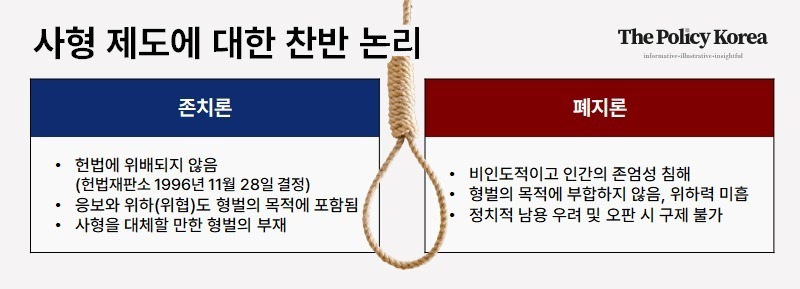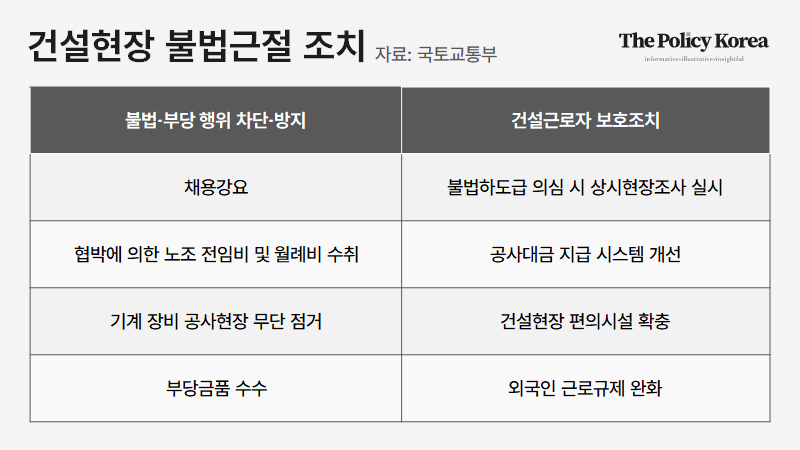[동아시아포럼] 일본의 MPIA 가입, WTO 개혁 추진력 높일까
MPIA, 미국 거부로 무력화된 WTO 상소기구 대신하고자 결성된 다자간 프레임워크 당초 미국 따라 가입 안 했으나, 제도 개혁 불투명하고 국내 시장 압박 들어오자 생각 바꾼 듯 일본, 미국과의 관계 유지하면서 분쟁 해결 시스템 개혁하기 위해 나서야 한다
[동아시아포럼]은 EAST ASIA FORUM에서 전하는 동아시아 정책 동향을 담았습니다. EAST ASIA FORUM은 오스트레일리아 국립대학교(Australia National University)의 크로퍼드 공공정책 학교(Crawford School of Public Policy) 산하의 공공정책과 관련된 정치, 경제, 비즈니스, 법률, 안보, 국제관계 및 사회에 대한 분석 및 연구를 위한 플랫폼입니다.
저희 폴리시코리아(The Policy Korea)와 영어 원문 공개 조건으로 콘텐츠 제휴가 진행 중입니다.
지난 3월 10일 일본은 미국의 거부권 행사로 제 기능을 하지 못하는 WTO의 분쟁 해결 시스템을 보완하고자 유럽연합과 캐나다가 주도해 결성한 다자간 프레임워크 MPIA(Multi-Party Interim Appeal Arbitration Arrangement) 가입을 결정했습니다. 일본 내에서 자유 무역보다는 경제 안보를 우선시해야 한다는 목소리가 높아지고 있음에도 불구하고 말입니다.

WTO의 분쟁 해결 제도는 1995년에 만들어졌는데, 패널과 상소기구(Appellate Body, AB)라는 2단계 체계를 채택하고 있습니다. 지금까지 600건이 넘는 사건이 이 제도를 통해 처리됐죠. 하지만 WTO의 상소기구는 2019년 12월 미국이 상소기구의 권한 남용을 주장하며 판사 임명에 대한 거부권을 행사하면서 무력화됐습니다.
이후 몇몇 WTO 회원국은 패널 단계에서 패배한 당사자가 상소기구에 항소하는 ‘무효에 대한 항소(appeals into the void)’ 행위를 하기 시작했습니다. 상소기구에 판사가 없어 무력화된 상황이니 사건을 상소기구로 넘긴다면 분쟁 해결 절차가 사실상 중단되는 상황을 악용한 겁니다. 2020년 이후 총 18건의 무효에 대한 항소가 벌어졌는데, 그중 8건을 미국이 주도했습니다.
WTO의 분쟁 해결 메커니즘의 근간이 무너지면서 신규 분쟁 건수 역시 줄어들었습니다. 1995년부터 2019년까지는 연평균 20건이 넘었지만 2020년부터 2022년까지는 평균 7건밖에 나오지 않았죠.
앞서 언급했듯이 MPIA는 WTO의 분쟁 해결 시스템 유지를 목적으로 유럽연합, 호주, 캐나다, 중국 등 47개 WTO 회원국이 2020년 4월에 만든 항소 중재 시스템입니다. 현재는 일본을 비롯해 53개국이 참여하고 있습니다.
분쟁 당사자가 MPIA 회원국이고, 적어도 한 당사자가 패널의 조사 결과에 동의하지 않는다면 해당 사건은 상소기구가 아닌 MPIA로 넘어가게 됩니다. MPIA의 중재 판정은 구속력이 있으며 판정에 따르지 않는 경우 대응 조치를 받을 수 있습니다. 최초의 MPIA 중재 판정은 2020년 12월 내려졌는데, 당시 패소한 콜롬비아는 WTO의 의무를 존중하는 방식으로 MPIA의 결정에 따르겠다는 의사를 밝혔습니다.
물론 미국은 상소기구의 옳지 못한 관행이 MPIA에도 존재한다고 주장하며 MPIA에 참여하지 않고 있습니다. 일본은 오랫동안 WTO 상소 시스템의 혜택을 누린 국가인데, 처음에는 미국과 뜻을 같이하며 MPIA에 가입하지 않겠다는 결정을 내렸습니다. 전문가들은 이 결정을 비판했지만 사실 일본이 몸을 사린 건 MPIA가 점차 성공적으로 진행되면 WTO의 분쟁 해결 시스템 개혁이 추진력을 잃을 수도 있다는 걱정을 했기 때문입니다. 일본은 WTO 탈퇴 가능성을 제시한 미국에 힘을 실어주고 싶어 했습니다.
그렇다면 일본은 어쩌다 생각을 바꾸게 된 걸까요?
첫 번째 이유는 WTO 분쟁 해결 제도 개혁의 전망이 상당히 불투명하다는 것입니다. 지난해 6월 제12차 WTO 각료회의에서 각국 장관들은 2024년까지 ‘완전하고 잘 작동하는 분쟁 해결 시스템’을 완성하겠다고 합의했습니다. 하지만 상소기구의 개혁 방향은 아직 결정되지 않았고, 미국을 비롯한 회원국들이 합의에 도달할 수 있을지도 미지수입니다. 아울러 2024년에는 미국 대통령 선거가 예정되어 있기에 분쟁 해결 개혁에 대한 미국의 견해는 더욱 확고해질 것입니다.
두 번째로는 일본 정책 입안자들이 일본 시장의 압력을 받고 있다는 점을 들 수 있습니다. WTO 패널은 일본 철강 제품에 대한 한국과 인도와의 분쟁에서 일본의 손을 들었습니다. 하지만 이 두 나라가 ‘무효에 대한 항소’를 했기에 해당 사건은 끝을 보지 못했습니다(한국과 인도는 MPIA 회원국이 아닙니다). 철강 분쟁은 여기서 끝나지 않았는데, 곧 중국과의 분쟁을 다룬 WTO 패널 보고서도 나올 예정입니다. 이에 일본의 철강산업협회는 일본의 MPIA 참여를 강력히 촉구했고, 일본경제단체연합회(도쿄 증권거래소 제1부 상장기업이 중심인 일본의 경제 단체, ‘게이단렌’이라고도 불림) 역시 참여를 권장하는 보고서를 발표했습니다.
지금까지 일본은 다른 회원국의 조치로 곤란을 겪는 상황에서 WTO를 통하지 않고 자체적인 대응을 하는 것을 자제해 왔습니다. 따라서 상대국이 무효에 대한 항소를 하게 되면 더 이상의 대응이 거의 불가능했습니다. 하지만 이제 일본이 MPIA에 참여하게 됐으니 상황은 달라질 것입니다.
WTO 회원국 대부분은 상소기구의 기능이 돌아오기를 바라고 있습니다. 한편 일본의 MPIA 참여 결정은 일본이 이제 자신의 최대 교역 상대국인 중국을 비롯해 다른 주요 협력 국가와의 분쟁 해결을 목표로 삼을 수 있다는 뜻이기도 합니다. 지난 4월 11일 일본과 중국은 양국이 패널의 조사 결과에 동의하지 않는다면 MPIA의 중재 절차에 따르기로 합의했다고 WTO에 통보했습니다.
또한 이번 결정은 ‘규칙에 기반한 국제질서’에 대한 강력한 지지 선언으로도 해석할 수 있습니다. 지정학적인 환경이 극적으로 변화하고, 많은 나라가 보호주의로 돌아서는 상황에서 일본은 과거의 약속을 존중하고 개방적인 무역 시스템과 경제 안보 사이에서 더 나은 균형을 달성하겠다는 의지를 거듭 밝혔습니다.
현재 MPIA 회원국이 아닌 나라들이 일본의 참여에 자극을 받을지도 모릅니다. 다자간 협정은 일반적으로 긍정적인 네트워크 외부 효과를 갖기에 더 많은 WTO 회원국이 참여하면 MPIA의 가치도 높아지게 됩니다.
그렇지만 MPIA 확대가 WTO 분쟁 해결 개혁에 어떤 영향을 미칠지는 미지수입니다. 만약 MPIA 확대로 미국이 WTO로부터 고립되는 상황이 벌어진다면 개혁의 추진력은 사라질 수 있습니다. 규칙에 기반한 국제질서가 후퇴하는 겁니다. 반대로 미국이 이를 보면서 WTO 회원국에 자신의 개혁 모델을 강요하는 게 가능할지, 실제로 잘 작동하는 시스템에서 멀어지는 것에 가치가 있을지 의문을 품게 된다면 개혁에는 긍정적인 영향이 있을 것입니다.
미국과 중국의 전략적 경쟁이 격화되고 보호주의가 세를 넓히면서 일본의 목표는 미국과의 관계를 유지하면서 분쟁 해결 시스템을 개혁하는 데 적극적인 역할을 하는 것이 되었습니다. 일본은 미국을 소외시키지 않도록 노력하면서도 자국의 이익을 위한 최선의 선택을 해야 할 것입니다.
일본의 MPIA 가입 결정은 이것이 가능하다는 것을 보여주는 좋은 사례입니다.
Japan’s joining MPIA an outside chance to boost momentum for WTO reform
On 10 March 2023, Japan decided to join the Multi-Party Interim Appeal Arbitration Arrangement (MPIA), a plurilateral framework birthed by the European Union and Canada, that aims to supplement the WTO’s dispute settlement system that US vetos have made presently dysfunctional. The Japanese decision came despite growing calls in Japan to prioritise economic security over free trade.
The WTO’s dispute settlement system, established in 1995, adopts a two-tier system with a panel and an Appellate Body. There have been more than 600 cases dealt under this WTO regime. The WTO’s Appellate Body has been non-functional since December 2019 due to the US vetoes of the appointment of judges, with the United States claiming Appellate Body overreach.
Some WTO members resorted to ‘appeals into the void’, where losing parties at the panel stage appealed to the Appellate Body, knowing its judge-less status would necessarily halt the dispute settlement procedure. Since 2020, 18 cases have gone to appeal, eight notified by the United States.
The erosion of the foundations of the WTO dispute settlement mechanism has seen the number of new disputes decline. The annual average from 1995 to 2019 was over 20, while from 2020 to 2022, the average was only seven.
The MPIA is an appeal arbitration system created in April 2020 by 47 WTO members — including the EU, Australia, Canada and China — to keep the WTO’s dispute settlement system afloat. Currently, the membership has expanded to 53, including Japan.
If parties to a dispute are MPIA members and at least one disagrees with the panel’s findings, they use the MPIA instead of appealing to the non-functioning WTO Appellate Body. Arbitration awards are binding, and if a party does not comply, it can be subject to countermeasures. The first arbitration award was issued in December 2022. Colombia, which lost the case, expressed its intention to implement the award in a manner that respects its WTO obligations.
The United States, of course, does not participate in the MPIA, claiming that the undesirable practices of the Appellate Body were embedded in the MPIA. Having long benefited from the WTO’s appeal system, Japan initially aligned itself with the United States, deciding not to join. While experts criticised Japan’s stance, its cautious attitude was partially based on a concern that, as the MPIA became increasingly successful, WTO dispute settlement reform might lose momentum. With the United States hinting at a possible WTO exit, Japan also wanted to avoid backing them into a corner.
Why has Japan now decided to join the MPIA?
First, the prospects for successfully reforming the WTO dispute settlement system remain unclear. At the 12th WTO Ministerial Conference in June 2022, ministers agreed to achieve a ‘fully and well-functioning dispute settlement system’ by 2024. Yet the direction of Appellate Body reforms has yet to be determined, and it is uncertain whether members, including the United States, can reach a consensus. In addition, the 2024 US presidential election could further stiffen the country’s attitude toward dispute settlement reform.
Second, Japanese policymakers have faced pressure from the Japanese business sector. The panel’s findings favoured Japan in disputes over Indian and South Korean measures against Japanese steel products. These two non-MPIA member countries have appealed into the void, leaving the cases unresolved. A panel report is also expected to be issued shortly in a steel-related dispute with China. Steel industry associations have strongly urged Japan’s participation in the MPIA. And Keidanren (Japan’s Federation of Business Organisations) published a report that recommends Japan take part in the MPIA.
Japan has traditionally refrained from invoking WTO-inconsistent unilateral measures when troubled by other members’ unlawful measures. Hence, Japan could lose almost all its options if the other parties appeal into the void — neither the WTO appeal procedure nor unilateral measures would offer viable remedial options. Participation in the MPIA will help cover the gap.
Most countries would like the WTO Appellate Body to return to functionality. Meanwhile, Japan’s decision to participate in the MPIA means Japan can now aim for dispute settlement with China — Japan’s largest trading partner — as well as a significant group of other partners who participate. On 11 April 2023, both Japan and China notified the WTO they had agreed to use the MPIA’s arbitration procedure if either party disagreed with the panel’s findings.
Japan’s participation in the MPIA can also be interpreted as a strong declaration of support for the ‘rules-based international order’. As the geopolitical environment has shifted dramatically and many countries have inclined towards protectionism, Japan has reiterated its willingness to respect past commitments, and achieve a better balance between an open trading system and economic security.
Japan’s participation may also increase the incentive for other non-MPIA members to join. Since plurilateral arrangements usually have positive network externalities, the more WTO members that participate, the more the value of the MPIA increases.
Conversely, even if the MPIA expands, it is not certain whether this will be a stumbling or a building block toward WTO dispute settlement reform. It could prompt the United States to further isolate itself from the WTO, and momentum for reform might be lost. In that case, the rules-based international order could be further undermined. But it could also prompt the United States to reassess its power to press its own model of reform upon WTO members and the value of its retreat from a system that in practice continues to work.
With growing strategic competition between the United States and China and increasing protectionism, Japan aims for an active role in reforming the dispute settlement system while keeping the United States on board. Japan will have to make the best choice in its own national interests while trying not to alienate the United States.
Japan’s decision to join the MPIA demonstrates that this is possible.



























